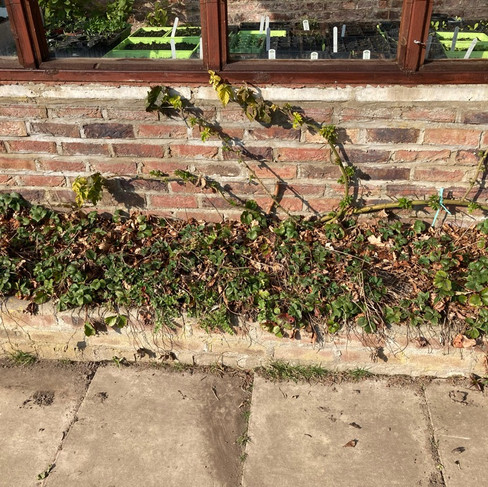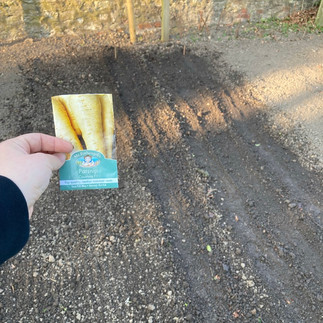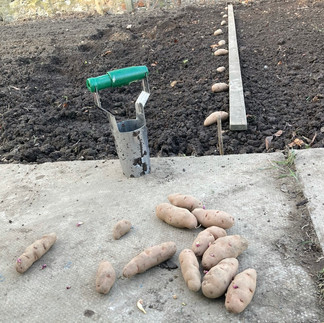March Days
- wllmsutherland
- Mar 31, 2022
- 3 min read
We have passed the spring equinox now and the pace in the garden is slowly picking up. There is still tidying to be done and, while the chance of frosts has still not passed, planting out is somewhat limited.
Nonetheless, in the middle of March we had a long spell of dry sunny weather – ideal for knocking those weeds back with the rotavator. Always remember to remove all perennial nasties (nettles, docks, couch grass, ...) BEFORE you rotavate – and choose a nice breezy dry day – work in the morning so the weeds have plenty of time to desiccate before the cool of evening!

The rotavator is one of the very few fuel powered tools we use in the garden. It saves a huge amount of work, as the earth would otherwise need to be systematically turned and broken up with a spade. Over the sizeable area of the beds at CB, this could take many days of work. What is more, to give our seedlings the most competitive chances of growing, we need to knock these weeds back to 0 each time we sow more rows of seeds. Over the course of the year the rotavator really does save a huge amount of labour!
While motor-powered, this machine does still demand a fairly strong steer to keep the depth and surface even across such a large bed. Practice and caution are requisite for beginners, as evidenced by the image below! Around the edges the rotavator must steer a few inches clear of concrete slabs and this is where the more pernicious perennial weeds like to take up residence, so some manual extraction is still required.

We have now planted all our garlic, onions, parsnips and potatoes – although they will not show much for the next couple of weeks while the weather warms up. We have selected some different varieties of each vegetable and planted sections in different areas of the garden to mitigate the risk of devastation of a whole crop should any pests descend on one area. While we are lucky that all of the garden has excellent quality top soil here at CB, bolstered by the annual compost spreading, it behaves quite differently in different areas of the garden. It will be an interesting experiment to find out which areas are best for each vegetable.
In the greenhouse there is a hive of activity: (too many!) tomatoes, herbs, sweet corn, salad & leeks are all growing rapidly. A handful of early brassicas - cauliflowers & sprouts - have already germinated too, so we are patiently waiting for the frosts to pass to allow some of these to be moved outside and make way for beans, pumpkins and courgettes. Yesterday the outside temperature was just 4.5 degrees, but it was 21 in the greenhouse (just solar gain). We are doing a bit of brickwork to extend the concrete shelving and make more room for plants as the summer progresses. Perhaps a crop of climbing cucumbers or squashes in grow bags... watch this space!
In the kitchen (and on the dining table) we now have a plentiful of delicious sprouting broccoli. I put 4 bags in the deep freeze yesterday – and there will be more to come. What a brilliant crop this is! Not only are the flowering shoots delicious, but the tender leaves around them are sweet and perfectly edible too. Just a shame that the cabbage white butterflies are on the same page. Their love for brassicas necessitates some strategic planning to ensure sufficient, and cost effective protection is in place to avoid decimation of crops before we get a chance to harvest.
It is comforting to know that whatever madness continues in the outside world, our garden will be transformed in the next 4 weeks by the magical power of photo-synthesis and the sun!



















Comments